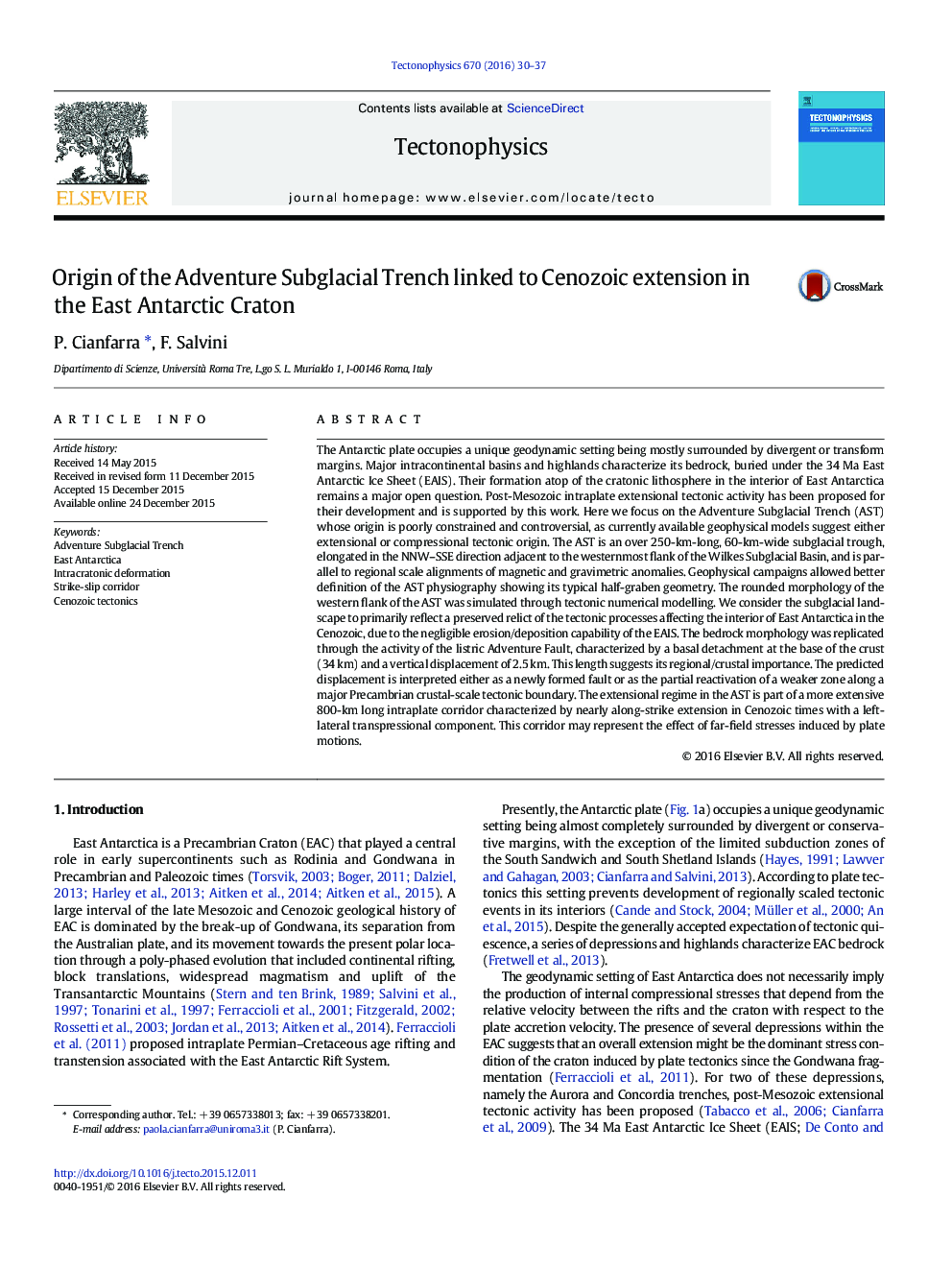| کد مقاله | کد نشریه | سال انتشار | مقاله انگلیسی | نسخه تمام متن |
|---|---|---|---|---|
| 4691370 | 1636726 | 2016 | 8 صفحه PDF | دانلود رایگان |
• Extensional tectonic origin of the Adventure Subglacial Basin
• Intraplate strike-slip deformation characterizes interior of East Antarctica.
• Cenozoic structural corridor of deformation within the East Antarctic craton
The Antarctic plate occupies a unique geodynamic setting being mostly surrounded by divergent or transform margins. Major intracontinental basins and highlands characterize its bedrock, buried under the 34 Ma East Antarctic Ice Sheet (EAIS). Their formation atop of the cratonic lithosphere in the interior of East Antarctica remains a major open question. Post-Mesozoic intraplate extensional tectonic activity has been proposed for their development and is supported by this work. Here we focus on the Adventure Subglacial Trench (AST) whose origin is poorly constrained and controversial, as currently available geophysical models suggest either extensional or compressional tectonic origin. The AST is an over 250-km-long, 60-km-wide subglacial trough, elongated in the NNW–SSE direction adjacent to the westernmost flank of the Wilkes Subglacial Basin, and is parallel to regional scale alignments of magnetic and gravimetric anomalies. Geophysical campaigns allowed better definition of the AST physiography showing its typical half-graben geometry. The rounded morphology of the western flank of the AST was simulated through tectonic numerical modelling. We consider the subglacial landscape to primarily reflect a preserved relict of the tectonic processes affecting the interior of East Antarctica in the Cenozoic, due to the negligible erosion/deposition capability of the EAIS. The bedrock morphology was replicated through the activity of the listric Adventure Fault, characterized by a basal detachment at the base of the crust (34 km) and a vertical displacement of 2.5 km. This length suggests its regional/crustal importance. The predicted displacement is interpreted either as a newly formed fault or as the partial reactivation of a weaker zone along a major Precambrian crustal-scale tectonic boundary. The extensional regime in the AST is part of a more extensive 800-km long intraplate corridor characterized by nearly along-strike extension in Cenozoic times with a left-lateral transpressional component. This corridor may represent the effect of far-field stresses induced by plate motions.
Journal: Tectonophysics - Volume 670, 22 February 2016, Pages 30–37
